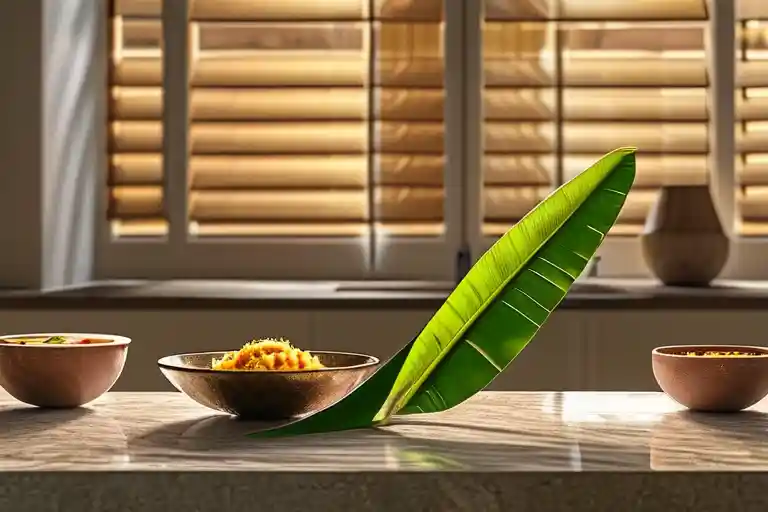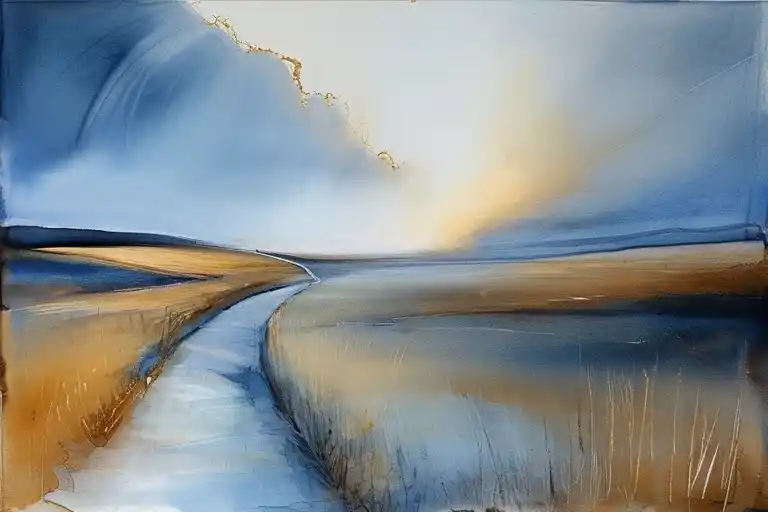The morning began like any other—wakefulness creeping in, the soft hum of household stirrings, the familiar weight of yesterday’s thoughts not yet fully shaken off. I walked into the kitchen, poured a glass of water, and saw my sister by the window, already dressed. “Good morning,” I said, my voice still rough with sleep.
She turned, a small, knowing smile on her face. “Happy Onam!”
It took a moment to register. Onam? I paused, the glass halfway to my lips. “Is it Onam today?”
“Yes,” she replied, her tone light, almost amused by my confusion.
That was the moment—simple, unremarkable, yet quietly significant. The first time I had forgotten a festival day. Not just any festival, but Onam, a celebration woven so deeply into the cultural fabric of Kerala that its absence in one’s awareness feels almost like a small betrayal. Or perhaps just a sign—of time passing, priorities shifting, life layering itself in new ways until even the familiar begins to fade at the edges.
I reached for my phone, and there it was: a stream of messages and images from friends, their homes adorned with floral arrangements, their tables laden with traditional feasts. Children in new clothes, families reunited, the particular warmth that seems to emanate from screens when joy is being shared. Married daughters back in their parents’ homes, laughing alongside siblings they hadn’t seen in months. The sight was vivid, full of color and motion—a world celebrating in unison.
And then there was me, standing in my slippers, trying to remember what Onam felt like years ago, when the excitement began days in advance, when the air itself seemed to change. Something had shifted, not suddenly, but slowly, like tide receding from shore. I couldn’t quite name it—loss? growth? distraction?—but it was there, lingering in the space between what was and what is.
Through the window, my uncle called out, “Happy Onam!” I returned the greeting, then added, almost as an afterthought, “I’ve got some work to finish.”
He raised an eyebrow. “On Onam? You’re working today?”
I shrugged. It wasn’t a decision made with any great deliberation. Work had been piling up; deadlines don’t observe holidays. And yet, his question hung in the air, subtle but persistent. Why work on a day meant for celebration? Why choose productivity over presence?
It wasn’t that I didn’t value tradition. Christmas and Easter still hold their sacred space in my year—days when work stops entirely, when time itself seems to soften and expand. But Onam… Onam had drifted into the background, its significance fading like an old photograph left too long in the sun.
Later, we had a simple meal—a sweet dessert, two kinds of banana fries, a quiet acknowledgment of the day. It was enough, and yet it wasn’t. Enough to mark the occasion, not enough to feel it. That’s the strange paradox of modern life, perhaps: we keep the rituals but lose the resonance. We perform the actions but forget the meaning.
This is the reality for many now—juggling identities, balancing old traditions with new responsibilities, navigating the quiet space between cultural heritage and personal evolution. It’s not a rejection of where we come from, but an acknowledgment that life expands, contracts, changes shape. And sometimes, in that process, we forget. We forget the festivals, the stories, the rhythms that once defined us.
But maybe that’s okay. Maybe remembering that we forgot is its own kind of remembering—a pause, a question, an invitation to look closer at what we carry forward, and what we choose to leave behind.
A Forgotten Festival
The realization arrived not with a bang, but with a simple, cheerful greeting. My sister’s voice, bright and matter-of-fact, sliced through the morning haze. “Happy Onam!” she said, as if commenting on the weather. For a moment, the words didn’t compute. Onam? A beat of silence, then the quiet, internal scramble. A mental calendar flickered, dates shuffling. I had to ask, just to be sure, the question feeling oddly formal in the soft light of morning. “Is it Onam?”
Confirmation came with a nod, and there it was—the first time a major festival had slipped my mind entirely. No anticipatory build-up, no mental notes to buy bananas for the traditional fries, no subconscious awareness that a day of collective celebration was approaching. It was just another morning, until it wasn’t. The feeling was less one of guilt and more a dull, surprising emptiness, like reaching for a familiar step on a staircase and finding it absent. The rhythm of the day was off, its traditional cadence replaced by an unfamiliar silence.
Almost on autopilot, my hand reached for the phone. The screen lit up, a portal to a parallel universe where the festival was in full, vibrant swing. A cascade of crimson and gold—photos of friends and their families, all dressed in pristine, starched mundus and set-sarees, the traditional white and gold of the occasion. Smiling faces behind elaborate floral carpets, the intricate pookalams sprawled across courtyards, each petal placed with care. There were images of grand lunches, the sadya feast served on banana leaves, a rainbow of vegetarian dishes surrounding a mound of rice. The sheer volume of it was overwhelming, a stark, visual chorus of celebration that my own quiet morning could not answer.
It was a peculiar form of time travel, scrolling through that feed. Each post was a vignette from a celebration I was physically present for yet mentally a thousand miles away from. I saw the married daughters of our neighborhood, home with their families, their little ones dressed in miniature versions of traditional wear, their eyes wide with the excitement of a holiday. They were doing all the things we Keralites do—the cooking, the gathering, the laughter that seems to echo a little louder on festival days. The contrast was jarring. My reality was a quiet room and the soft hum of my laptop powering up; theirs was a symphony of tradition, a ritual played out with practiced ease.
That initial spike of surprise began to ebb, replaced by a slow, settling acceptance. This forgetting, I realized, wasn’t a singular event but a symptom. A quiet acknowledgment that the threads connecting me to certain traditions had grown thinner, stretched by the sheer mundanity of daily life and the fluid, often isolating nature of modern work. The festival outside my window and the reality inside my room existed on two different frequencies. I had tuned into one without remembering to check for the other. The acceptance wasn’t happy, but it was calm—a recognition of a change within myself, a subtle but real shift in my relationship with the cultural heartbeat of home. The celebration would continue with or without my active remembrance; I was merely a spectator this year, observing the ritual from a newfound distance.
Work or Celebration
The window was open just enough to let in the morning air, carrying with it the distant sounds of laughter and the faint scent of flowers from neighboring celebrations. My uncle stood in his yard, holding a cup of tea, his traditional Onam attire bright against the green of the garden. When I shouted my greeting, his eyebrows lifted in that particular way that conveyed both affection and mild disapproval.
“Who works even on Onam day?” he called back, his voice carrying across the space between our homes. “You had flexible work, right?”
The question hung in the air, simple yet layered with generations of understanding about what matters on festival days. I shrugged, a gesture he probably couldn’t see from that distance, but one that felt necessary nonetheless. The truth was more complicated than I could explain through an open window.
Work had become my anchor in a sea of changing traditions. For days, I’d been drifting—missing deadlines, pushing back meetings, feeling the gradual unraveling of professional discipline that comes when personal life demands more space. The flexible schedule that should have been a blessing had become a curse of perpetual postponement. There’s a peculiar guilt that comes with working from home, where the boundaries between personal time and professional obligations blur until you’re neither fully present for your life nor properly committed to your work.
Choosing to work on Onam wasn’t about rejecting tradition as much as it was about reclaiming some sense of control. The rhythm of typing, the focus required to solve problems, the tangible progress of completed tasks—these offered a different kind of celebration. One that acknowledged the modern reality that for many of us, work isn’t just a job but part of our identity and stability.
My uncle’s generation measured time by seasons and festivals. Our generation measures it by deadlines and deliverables. This isn’t necessarily better or worse—just different. The conflict arises when these two ways of being try to occupy the same space, the same day, the same consciousness.
Through that open window, I could see the life I was supposed to be having—the one where I’d be wearing new clothes, visiting relatives, participating in the elaborate Onam sadya feast. Instead, I was making a different choice, one that felt both necessary and vaguely disappointing. The screen glowed before me, a portal to responsibilities that didn’t care about cultural celebrations.
This is the modern professional’s dilemma: how to honor tradition while navigating a global economy that never sleeps. How to maintain cultural identity when work demands often feel more immediate than seasonal celebrations. The flexibility of remote work means we’re always home, yet never fully free from professional obligations.
That window conversation stayed with me throughout the day. Every keystroke seemed to echo with my uncle’s question. Why was I working? Because the work was there. Because I needed the structure. Because sometimes, maintaining professional commitments feels like the only stable thing in a world where traditional markers are shifting.
There’s no easy answer to this balancing act between work and celebration, between modern demands and traditional expectations. We each find our own compromises, our own ways of honoring what matters while surviving in the world as it exists today. My choice that day wasn’t right or wrong—it was simply mine, shaped by circumstances and priorities that my uncle, standing in his yard in festive clothing, might never fully understand.
Different Weights of Different Days
The hierarchy of celebrations in my life has never been particularly democratic. Christmas and Easter occupy the throne—days when work feels not just inappropriate but almost sacrilegious. On these days, the laptop remains closed, emails go unanswered, and time moves to a different rhythm entirely. They are non-negotiable anchors in my year, days that command a full stop in the usual flow of things.
Onam, by contrast, has settled into a different category. It’s not that it lacks significance; it’s that its significance has been quietly reshaped by the slow, steady pressures of adulthood, geography, and choice. At home, our observance was simple, almost minimalist: a special dessert, two types of banana fries, a quiet acknowledgment. No elaborate feasts, no new clothes waiting at the foot of the bed, no frantic visits to relatives. It was a celebration stripped down to its bare essentials—a gesture, more than a spectacle.
This personal scaling-down exists in stark contrast to the cultural weight Onam carries throughout Kerala. It’s a festival that transcends community and religion, a rare unifying thread in the state’s diverse social fabric. For Keralites, it’s more than a holiday; it’s a seasonal heartbeat. It’s the smell of flowers laid out in intricate pookalams on the ground, the taste of a grand sadya feast served on a banana leaf, the sound of traditional boat races echoing from backwater villages. It is, for so many, the ultimate expression of home.
That expression doesn’t fade with distance. If anything, it intensifies. My friends and relatives working in the Gulf states, in Europe, in America—they often celebrate with more fervor than those of us who remained. They recreate the sadya down to the last pickle, they hunt down kasavu sarees, they gather in community halls thousands of miles from the rivers of Kerala to sing and dance. Their Onam is an act of defiance against displacement, a powerful declaration of identity. It is extravagant, deliberate, and deeply emotional.
Which makes my own subdued response feel almost like a quiet heresy. This isn’t a loss of love for the tradition, but perhaps a reorganization of its place in a life that is constantly being redefined. The festivals that hold the most power are often those tied to our deepest personal narratives. For me, that narrative is intertwined with the rituals of Christmas and Easter. Onam’s narrative is different—it’s the story of a community, a culture, a homeland. And as my own story has branched away from a single, geographical definition of home, the way I engage with that larger cultural story has inevitably, subtly, changed.
Changing Traditions
There’s something paradoxical about watching Onam celebrations unfold through smartphone screens from distant continents. My cousins in Dubai host elaborate Onam feasts for thirty people in apartments that have never seen a paddy field. Friends in Toronto gather at community centers to create floral carpets in parking lots dusted with early snow. Their celebrations have grown more elaborate with distance, as if compensating for physical absence through intensified ritual.
Meanwhile, here in Kerala, where the festival originated, my observance has dwindled to acknowledging messages and perhaps eating a banana fry if someone prepares it. This inversion seems significant—the further people move from the source, the more fiercely they cling to tradition. Those who remain close to the cultural epicenter often feel permission to loosen their grip.
After graduation, the texture of festivals changed. School and college provided natural containers for celebration—forced participation that somehow fostered genuine connection. The structured freedom of educational institutions created ideal conditions for cultural transmission: enough framework to ensure continuity, enough flexibility to allow organic evolution.
Adult life offers no such containers. Work doesn’t pause for Onam unless declared a holiday. Responsibilities don’t acknowledge cultural calendars. The rhythm of professional life follows different beats—project deadlines, fiscal quarters, performance reviews. Traditional festivals become interruptions rather than integrations, requiring conscious effort to observe rather than flowing naturally from life’s pattern.
Urbanization plays its quiet role too. In cities, festivals become curated experiences rather than communal realities. We choose to participate rather than simply finding ourselves participating. This shift from default to deliberate changes the emotional quality of celebration. There’s self-consciousness where there was once unthinking tradition.
Yet I wonder if this apparent decline masks something more interesting. Perhaps what we’re witnessing isn’t the erosion of tradition but its transformation. The elaborate celebrations abroad might represent tradition’s new frontier—not diluted by distance but distilled to its essentials. When you can’t take culture for granted, you must decide what matters enough to preserve.
Here in Kerala, we’re surrounded by the living context of these traditions. The culture breathes around us daily, making specific celebrations less urgently necessary. The pressure to perform tradition diminishes when tradition forms your everyday environment. This might explain why my observance has become quieter while others’ grows more vivid.
The question isn’t whether traditions survive modernization, but how they adapt to it. My minimalist Onam observance and my cousin’s extravagant Dubai celebration might represent different points on the same spectrum of cultural adaptation. Both responses acknowledge the festival’s importance while negotiating its place in contemporary life.
This negotiation feels particularly acute for my generation. We stand between grandparents who remember pre-globalization Kerala and future generations who might experience these traditions as historical curiosities. Our task becomes translation—preserving essence while allowing form to evolve.
Sometimes I worry this adaptation constitutes loss. Other times I recognize it as necessary evolution. Traditions that cannot change become relics; those that evolve too quickly lose meaning. Finding the balance feels like our cultural work—deciding what to preserve, what to release, and what to reinterpret.
The contrast between elaborate diaspora celebrations and simplified local observances might represent not cultural decay but cultural diversification. The same tradition now serves different purposes for different communities—maintaining identity abroad, preserving continuity at home, creating connection across generations.
My quiet Onam observance doesn’t feel like rejection so much as redefinition. The festival’s meaning has shifted from external celebration to internal reflection. The day prompts questions rather than answers: What do I want to preserve? What can I let evolve? How do traditions serve us now versus how they served previous generations?
These questions feel more valuable than any specific ritual observance. They represent tradition doing its most vital work—not mindless repetition but conscious engagement with cultural inheritance. The form changes, but the conversation continues.
What Remains When Traditions Fade
There’s a particular loneliness that comes with realizing you’ve forgotten something that should matter. It’s not just about missing a date on the calendar, but about feeling disconnected from a thread that once tied you to something larger than yourself. Onam came and went, and I worked through it, and the world continued turning just the same.
I wonder sometimes what makes a tradition stick. Why do some celebrations retain their power while others gradually fade into background noise? Is it about community reinforcement, personal significance, or simply the weight of repetition over years? My relatives abroad will gather in foreign living rooms, recreating feasts with determined precision, while I, physically closer to where this all began, let the day pass with barely a notice.
Maybe it’s not about forgetting at all, but about redefining what deserves remembering. The traditions that survive aren’t necessarily the oldest or most elaborate, but the ones that continue to serve some purpose in our present lives. They become containers for what we need them to hold—connection, identity, comfort, or simply a reason to pause.
What happens to cultural identity when the rituals that once defined it lose their urgency? Does it transform into something else, something more personal and less collective? I think of my sister’s cheerful greeting, my uncle’s puzzled question through the window, the banana fries we still made out of habit rather than fervor. The forms remain, but the meaning has shifted, become more optional, more a matter of choice than obligation.
Perhaps this is simply how traditions evolve—not through dramatic breaks but through gradual, almost imperceptible shifts in attention. What one generation maintains with solemnity, the next might treat as background music to their daily lives. The celebration continues, but the reasons for celebrating change until eventually, the celebration itself changes too.
I don’t have answers about how to preserve what matters or how to decide what matters enough to preserve. The cultural inheritance we receive is never exactly what we pass along, and maybe that’s how it should be. We take what we need, what resonates with our particular lives, and we release the rest, trusting that others will find their own way to carry forward what matters to them.
What traditions have you held onto, and which have you let go? How do you decide what deserves your attention in a world that offers endless ways to spend your time and energy? I’m still figuring this out myself, one forgotten festival at a time.





